Key takeaways:
- Hospital ministry bridges faith and healthcare, offering emotional support and understanding to patients and families during vulnerable times.
- Cultural awareness enhances empathy and effectiveness in ministerial care, allowing for deeper connections through understanding diverse beliefs and practices.
- Building connections requires active engagement with different cultures, emphasizing the importance of listening and collaboration with community leaders.
- Future goals include creating inclusive spaces, fostering intergenerational dialogues, and enhancing digital outreach to broaden cultural exchange.
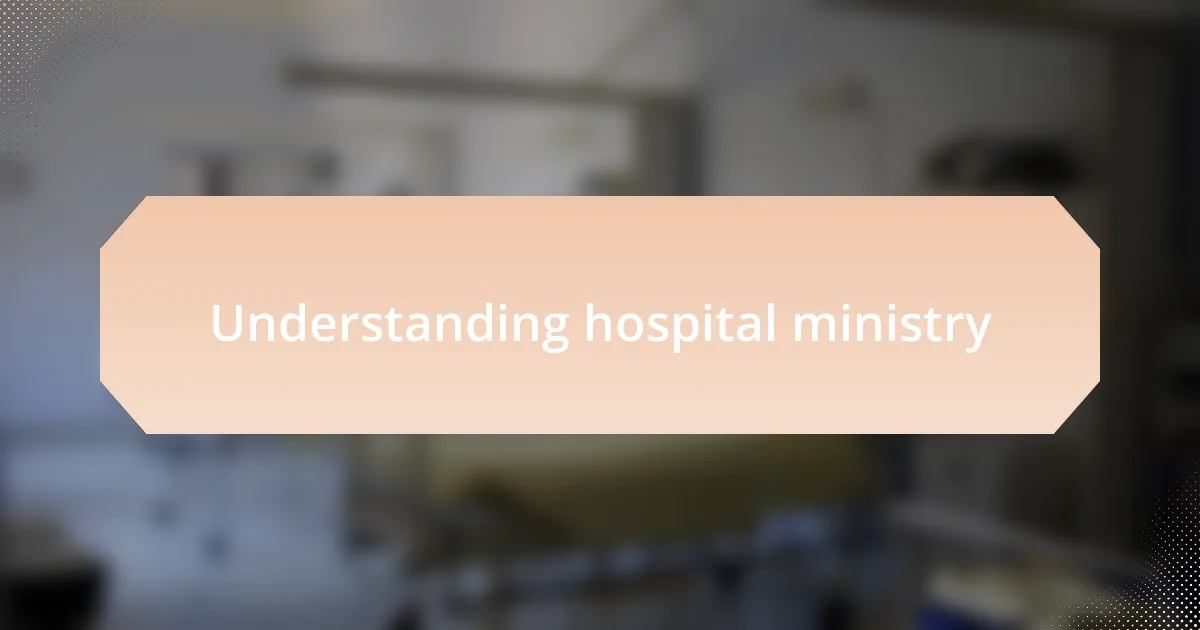
Understanding hospital ministry
Hospital ministry serves as a bridge that connects faith and healthcare, offering spiritual support to patients and families during some of their most vulnerable moments. I recall walking through the halls of a hospital, feeling the heaviness of anxiety and fear in the air. It made me wonder: how can a simple conversation or a prayer truly impact someone’s life when they are facing such profound challenges?
In my experience, the emotional landscape within hospitals is often complex. Each encounter reveals stories of hope and despair, highlighting our shared humanity. I remember meeting a family grappling with the pain of a terminal diagnosis. They were searching for meaning amid their suffering, and it was in those raw moments that I understood the power of listening and compassion in hospital ministry. Can you imagine the weight lifted when someone simply acknowledges your pain?
Many might underestimate the significance of a kind word or a compassionate touch, yet these small gestures can create a ripple effect of healing. I’ve seen patients transform when they realize they are not alone; the warmth of community can be as vital as medical treatment. In this sacred space, I have learned that understanding someone’s culture—be it through their traditions, beliefs, or struggles—enriches the ministerial approach, making our connection all the more meaningful.
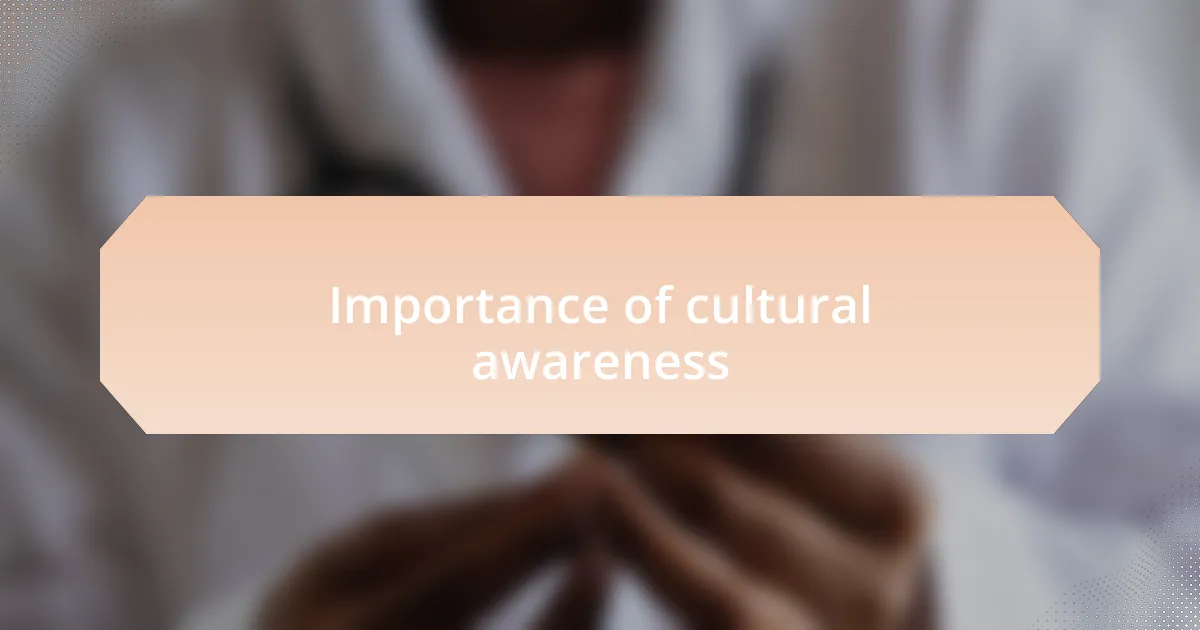
Importance of cultural awareness
Cultural awareness is essential in hospital ministry because it allows us to recognize and respect the diverse backgrounds of patients and their families. I vividly recall a time when I connected with a patient from a different culture; their spiritual practices were unfamiliar to me. It was only after I took the time to understand their beliefs that I could support them in a way that truly resonated with them. Have you ever tried to comfort someone with a gesture they didn’t understand? It seldom yields the warmth we seek.
Understanding different cultural perspectives also fosters genuine empathy, which is crucial during moments of crisis. I once sat with a family who held different views about end-of-life care. Rather than imposing my perspective, I listened intently to their wishes and concerns. This experience taught me that being aware of cultural nuances can transform a tense situation into a dialogue filled with understanding. When we bridge those gaps, we create a safe space for patients to express their feelings without fear of judgment.
Moreover, cultural awareness enhances the effectiveness of spiritual care. For instance, I learned how a simple prayer could take on various meanings depending on one’s cultural lens. When I tailored my approach to align with a patient’s values—be it through specific symbols, language, or rituals—I witnessed a profound shift in their willingness to engage. What if we could all learn to see the divine in each other’s practices? That recognition not only allows for deeper connections but also enriches our own spiritual journey.
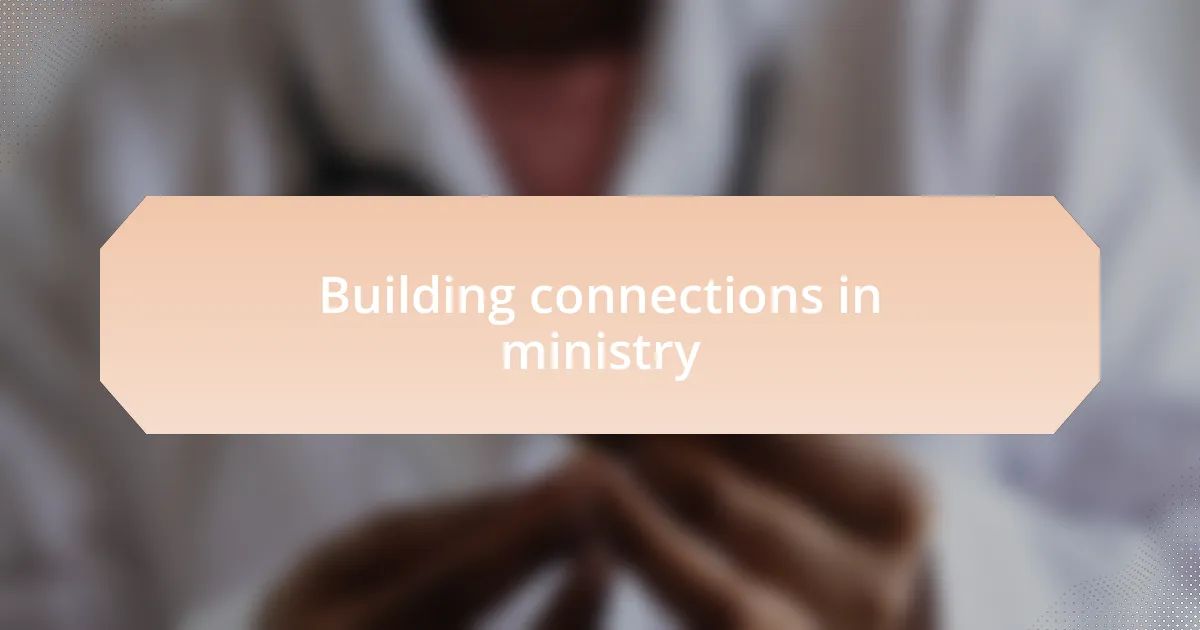
Building connections in ministry
Building connections in ministry often requires more than just offering support; it necessitates active engagement with diverse cultures. I remember visiting a community where traditional healing practices were prevalent. Instead of dismissing these methods, I immersed myself in the local customs. By participating in their rituals, I not only gained their trust but also discovered valuable insights into their spiritual needs. Have you ever found that common ground can lead to extraordinary understanding?
Listening is a key component in building these connections. I once had a conversation with a family that shared stories of their ancestry and how it influenced their values. By allowing them to narrate their history, I created a space for them to feel valued and understood. This experience reinforced the idea that, often, all people want is to be heard. How often do we forget the power of simply sitting and attentively listening to another’s journey?
Additionally, I’ve found that collaboration with cultural leaders can amplify our reach within the community. Working side by side with a local elder taught me the importance of honoring traditions while fostering spiritual engagement. Their presence lent credibility to our ministry, and the relationships we built flourished as a result. If we seek to serve effectively, why not partner with those who already hold the trust of the community?

Personal experiences in cultural exchange
I recall a vibrant intercultural potluck organized by our ministry, where each dish represented a different heritage. As I savored a spicy curry from a vibrant culture, I was struck by how food can serve as a bridge between worlds. Sharing these meals became moments of connection, where stories flowed as easily as the laughter around the table, reminding me that our differences can be celebrated through shared experiences.
One time, while participating in a community dance festival, I felt a profound sense of belonging. As I awkwardly followed the steps of the local dancers, their joy was infectious, sparking an unspoken bond among us. It was in that festive atmosphere that I learned the importance of stepping out of my comfort zone; sometimes, vulnerability fosters the deepest connections. Have you ever noticed how jumping into something new can lead to powerful insights about one another?
Then there was the time I joined a storytelling circle focused on local folklore. Listening to elders recount tales of resilience and community spirit was not only enlightening but also soul-stirring. The stories carried weight and depth, reminding me that cultural narratives shape our identities. In these moments, I realized that cultural exchange isn’t just about sharing differences; it’s also about weaving a richer tapestry of understanding through the legacies we pass on.
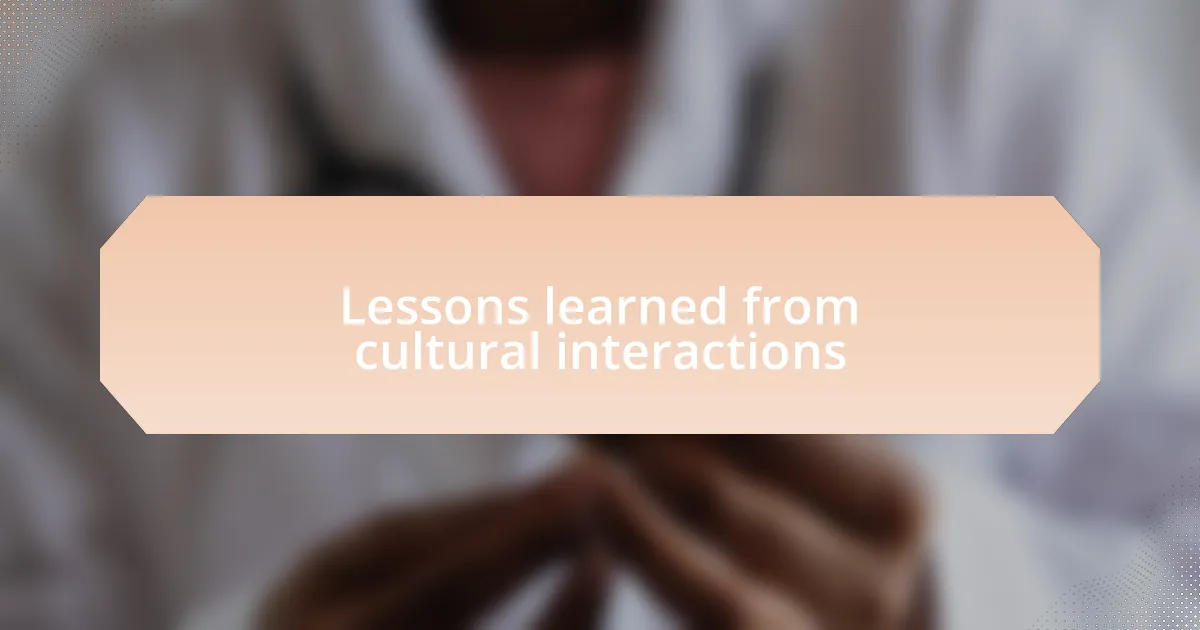
Lessons learned from cultural interactions
When I volunteered at a multicultural fair, I found myself immersed in stories that made me reflect on our shared humanity. One stand featured children from different backgrounds singing songs from their cultures, and it struck me that music transcends language barriers. It was a poignant reminder that, despite our varied roots, the universal joy of expressing oneself creates an unbreakable bond. Have you ever felt that rush of connection through a simple melody?
During a visit to a local cultural center, I engaged in conversations with immigrants sharing their experiences of adaptation and resilience. I remember one woman vividly; her journey was filled with challenges, yet she spoke of hope and community with such passion that it left a lasting impact. It reminded me that every personal story is a thread in the intricate fabric of our society. Have you taken time to listen to those around you and the lessons they hold?
Another lesson emerged during a collaborative art project, where people from various backgrounds painted a mural that symbolized unity. As I let my paintbrush dance across the canvas, I realized that creativity can foster collaboration. Working side by side with others allowed me to appreciate their perspectives, transforming a simple act of painting into a collective expression of identity. How often do we miss out on understanding each other because we stick to our own circles?
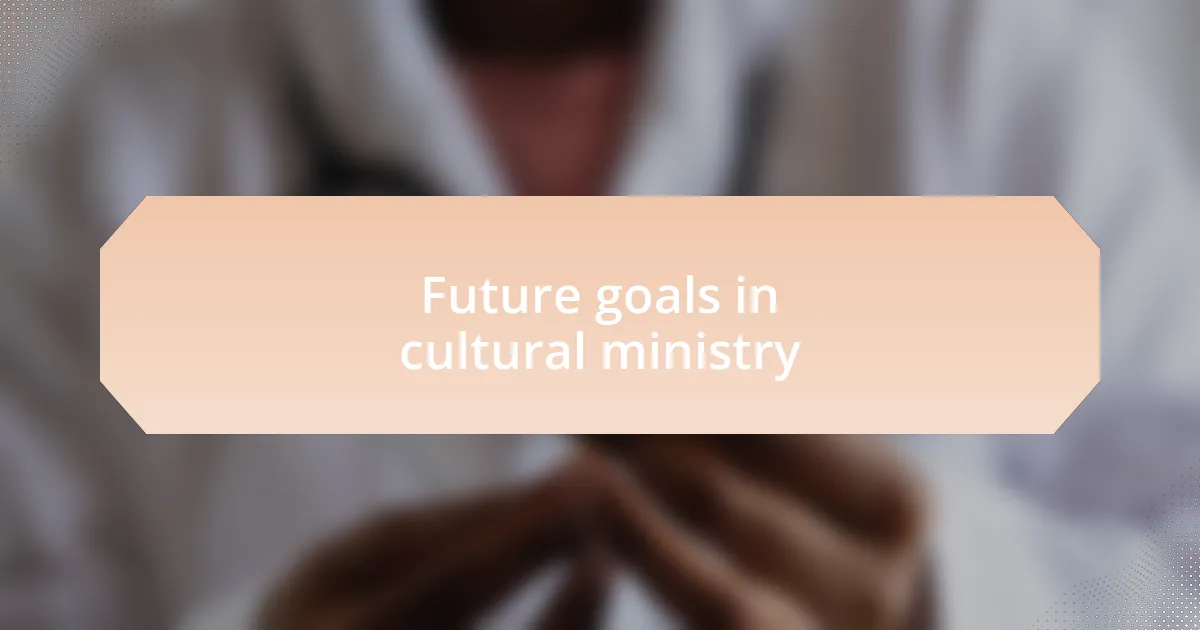
Future goals in cultural ministry
Looking ahead in cultural ministry, I envision a future where we create more inclusive spaces that celebrate diversity. I remember attending a community gathering where participants shared traditional dishes from their cultures. The power of food to bring people together was palpable, and I often think about how future initiatives can incorporate culinary experiences to deepen understanding. Have you considered how sharing a meal can break down barriers and foster connection in your own community?
Another goal I aspire to is fostering intergenerational dialogues that bridge cultural gaps. Recently, I facilitated a storytelling event where elders shared tales from their youth alongside younger participants eager to learn. Witnessing the exchange of wisdom and laughter was heartwarming. How might we encourage more of these interactions to enrich our understanding of each other’s backgrounds?
Moreover, I am passionate about enhancing our digital outreach to reach a wider audience. During a recent online workshop, I connected with participants from around the globe, sharing insights on cultural practices. The experience made me realize that leveraging technology can expand our cultural dialogues beyond geographical boundaries. Have you thought about how online platforms can amplify our mission in cultural ministry?